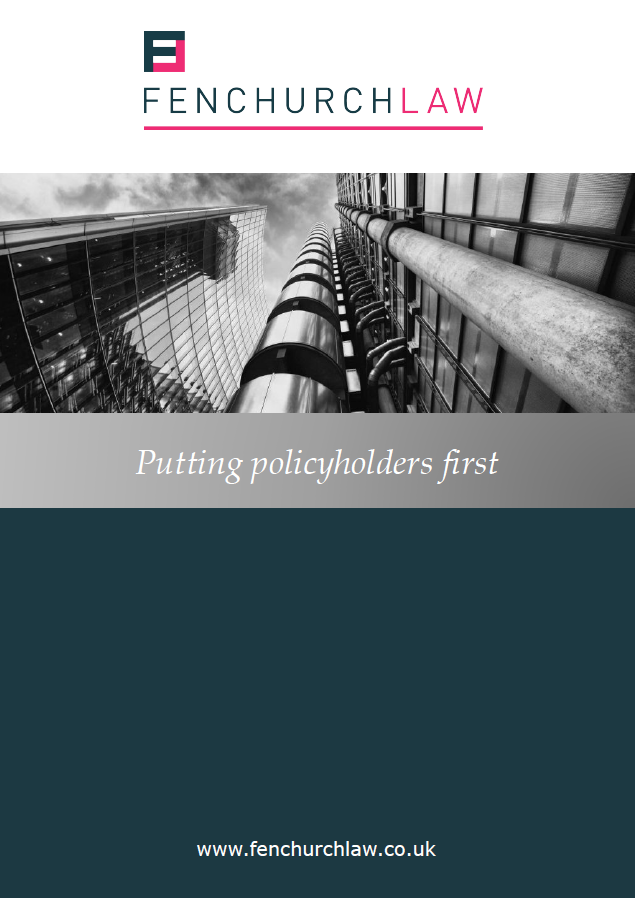
Covid-19 Business Interruption Update: Is another storm brewing?
With the FCA Test Case concluding last week, and judgment not expected until mid-September at the earliest, this blog looks briefly at what further tumultuous times may lie ahead for policyholders. Specifically, whether policyholders’ business interruption (“BI”) losses following COVID-19 will be aggregated.
Policyholders and their brokers will know that aggregation is not in the scope of issues that has been considered by the court in the FCA Test Case. There will therefore be no fresh judicial assistance available to insureds on this issue.
Given the significance of some policyholders’ losses, we anticipate that this will be a hotly contested battle with insurers that will yet need to be resolved post-FCA Test Case.
Aggregation
In summary, aggregation is a principle under which two or more separate losses are treated as a single loss because of a unifying or connecting factor.
For those policyholders that have multiple premises insured under a single composite policy, additional aggregation arguments may arise (subject to the specific policy wording).
Where the sub-limits relevant to these COVID-19 BI claims are often lower, any aggregation of claims may ultimately be the difference between claims of hundreds of thousands of pounds or multi-millions.
On that basis, it is inevitable that insurers will use any and all arguments available to them to limit the losses recoverable, presuming policyholders succeed at least in part on liability and are able to pursue the quantification of claims.
Key issues
Whilst insurers may well seek to aggregate the losses for those policyholders that have suffered large losses, there must be a proper legal and policy basis for doing so. We are not convinced that, market-wide, there is such a basis.
As a starting point, there are numerous BI policies that do not have any aggregation wording present at all. In those cases, policyholders can take some comfort depending on how the applicable limits and sub-limits are expressed.
There are others that may face arguments from insurers that suggest that throwaway comments such as “any one loss” amount to an intention to aggregate losses, even where the wording does not purport to be an aggregation clause. Such assertions are capable of being firmly rebutted.
Any application?
On one view, it might be that aggregating wording is not triggered in any event. If the wording responds in cases where there has been ‘Damage’ i.e. property damage, one might question the relevance of that wording to the non-damage linked extensions with which COVID-19 BI claims are principally concerned. If the definition of ‘Damage’ is not extended to include non-damage perils, then it may be arguable that any aggregating wording is limited to apply only to those damage-based claims.
Commercial intentions
Even if it is conceded that there is a hypothetical basis for aggregation wording applying to a BI policy, policyholders may wish to look for the commercial realities of the effect of aggregation.
Taking the example of multiple premises being insured under one policy, where the sub-limits of the non-damage BI extensions are often a lot lower than the sum insured, policyholders may reasonably arrive at the conclusion that the aggregation of its losses would result in a commercial absurdity. Policyholders might be left with entirely inadequate cover, which cannot have been what was intended by policyholders or their brokers when obtaining cover.
Policy construction and factual issues
Notwithstanding the primary arguments above, policyholders can take some comfort that there are likely to be good policy construction arguments available, which may well be supported by a proper application of the facts.
Each policy and claim will of course have to be assessed on its own merits and facts. That notwithstanding, we would encourage insureds and their brokers to very carefully consider: (a) the construction of the wording that the insurer wishes to rely on (where relevant); and (b) how the insured’s losses have actually arisen.
Close attention needs to be paid to the actual aggregating words used: clauses that purport to aggregate losses by ‘originating cause’, ‘event’, ‘occurrence’, or ‘claim’, will have very different effects, and despite a long line of case law considering the meaning and application of these terms to various facts and circumstances, their proper application in any given case remains perennially contentious.
No two losses will have arisen in the same way. Referring again to the example of a limit applying ‘any one loss’ in a policy covering multiple insured premises, it is likely implausible that the same losses will have arisen across multiple premises, at the same time, in the same way, and with the same consequences. Might the better analysis be that multiple losses and therefore claims have in fact arisen, which therefore do not fall to be aggregated?
Further Lockdowns
As we move into the next phase of the pandemic and a new era of local lockdowns and other containment measures, many recently re-opened businesses may find themselves shutting down once more. Do any losses arising as a result give rise to a new claim under the policy, or do they fall to be aggregated with any claim already submitted from the earlier national lockdown?
The answer will lie partly in the outcome of the FCA Test Case, which will give us clearer guidance on exactly how and when the various non-damage BI clauses respond, and partly on an analysis of the relevant aggregating language in the policy. No doubt further disputes will arise over whether local lockdowns and restrictions imposed in relation to localised COVID-19 outbreaks amount to independent ‘causes’, ‘events’, or ‘occurrences’, and again the outcome may make the difference between no cover and full cover for continuing losses suffered by many businesses affected by the progress of the pandemic.
In the meantime, any policyholder that is subject to new restrictions on their business that are likely to result in losses should make a fresh notification under their policy via their broker.
Comment
We remain hopeful that the judgment following the FCA Test Case will decide at least some of the issues in favour of policyholders so that claims in principle may yet fall to be indemnified. If that is right, policyholders will understandably wish to proceed as quickly as possible to the quantification, and recovery, of losses.
In circumstances where that point is nearing, and losses may begin to be crystallising as those shorter indemnity periods end, we would encourage policyholders to seek assistance from their professional advisers in presenting the losses in an accurate and appropriate way. Failure to take care in doing so only risks backfiring at a later stage.
If policyholders or their brokers would like advice on any of the issues discussed in this article, or COVID-19 BI claims generally, please do not hesitate to contact us. In addition to written material, our thoughts on these issues are also disseminated by webinar as part of Fenchurch Law’s The Associate Series.
Other news
Commercial Court grounds War Risks insurers in landmark Russian aircraft judgment
30 June 2025
Please find a link to the judgment here - Russian Aircraft Lessor Policy Claims [2025] EWHC 1430 (Comm) Introduction On…
You may also be interested in:
Archives
Categories
- Newsletter
- Events
- Webinars
- Comparing German and English Insurance Law – A Series
- Construction Risks
- Operations
- Business Development
- Construction & Property Risks
- News
- International Risks
- Legislation
- Financial & Professional Risks
- Case Law
- Professional Risks
- Press Release
- Uncategorized
- The Good, the Bad and the Ugly
- Fenchurch Law Webinars
- Stonegate



